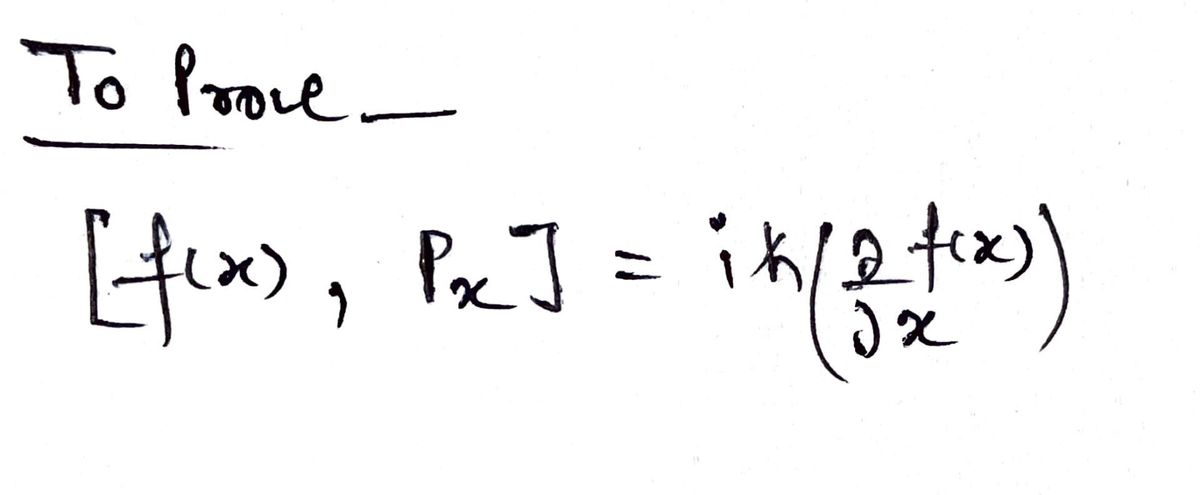Show that for any function f(x) and the momentum operator px, the operator [f(x), px] i hbar (df/dx) [Hint: Have the operators “operate" on a wavefunction to the right] =
Show that for any function f(x) and the momentum operator px, the operator [f(x), px] i hbar (df/dx) [Hint: Have the operators “operate" on a wavefunction to the right] =
Related questions
Question
![**Quantum Mechanics: Show That**
In quantum mechanics, demonstrate that for any function \( f(x) \) and the momentum operator \( p_x \), the following operator relation holds:
\[
[f(x), p_x] = i \hbar \left( \frac{df}{dx} \right)
\]
**Hint:** Consider how the operators interact with a wavefunction positioned to their right.](/v2/_next/image?url=https%3A%2F%2Fcontent.bartleby.com%2Fqna-images%2Fquestion%2F62a79166-ba2c-43d7-9fa1-94c5c5be2063%2F0e51afda-8613-4143-b534-56ed19afd2da%2Fe4kfgm1_processed.png&w=3840&q=75)
Transcribed Image Text:**Quantum Mechanics: Show That**
In quantum mechanics, demonstrate that for any function \( f(x) \) and the momentum operator \( p_x \), the following operator relation holds:
\[
[f(x), p_x] = i \hbar \left( \frac{df}{dx} \right)
\]
**Hint:** Consider how the operators interact with a wavefunction positioned to their right.
Expert Solution
Step 1: To prove

Step by step
Solved in 3 steps with 3 images
